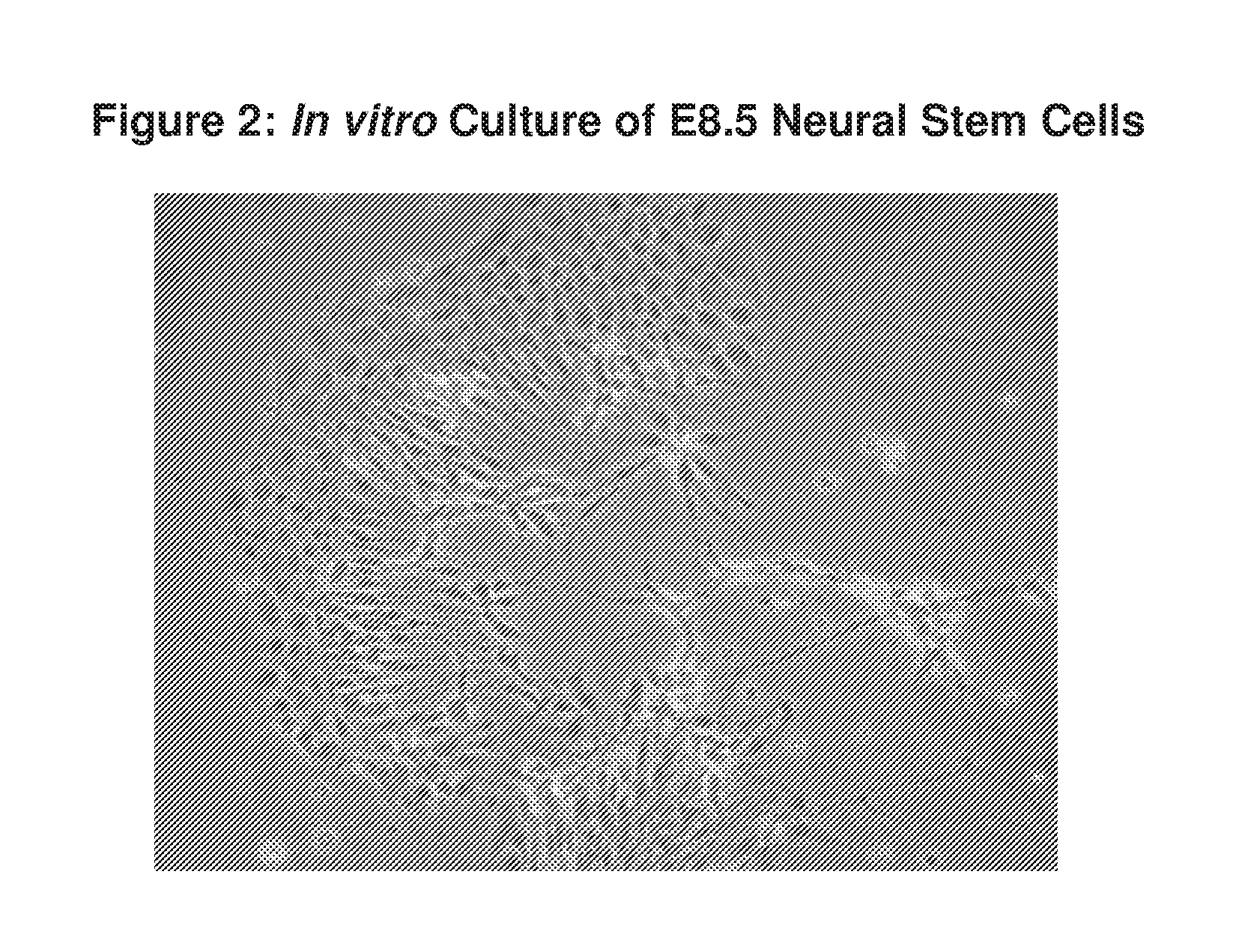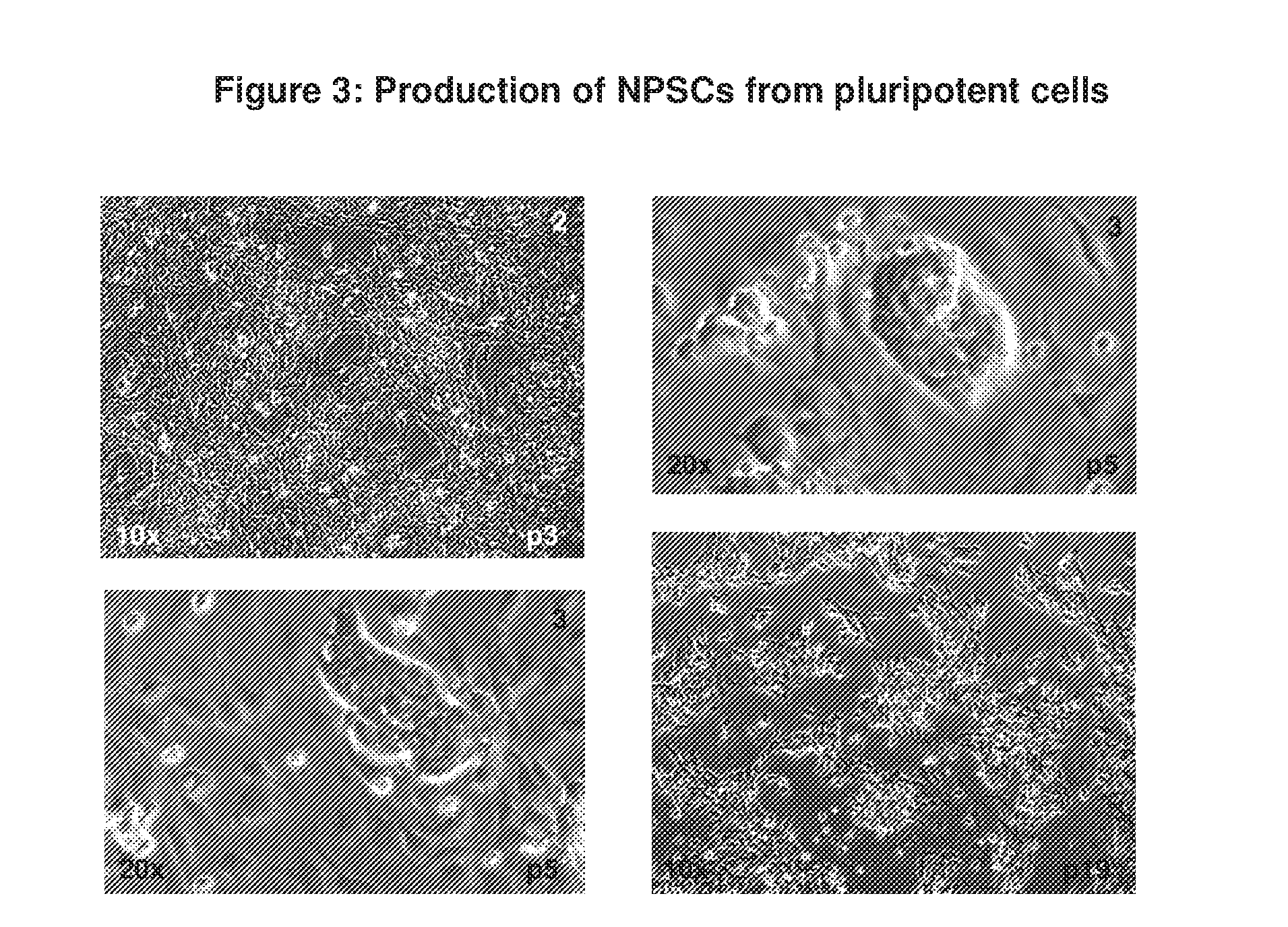Stem cells from the mammalian neural plate
a neural plate and stem cell technology, applied in the field of stem cells from mammalian early neural plate, can solve the problems of not being directly identifiable or purified, not often efficiently generating specific neurons lost in neurodegenerative disease, and requiring multiple steps for embryonic stem cells to be produced. , to achieve the effect of increasing the proliferation of npscs
- Summary
- Abstract
- Description
- Claims
- Application Information
AI Technical Summary
Benefits of technology
Problems solved by technology
Method used
Image
Examples
example 1
[0153]Derivation of Neural Plate Stem Cells from the Mouse Embryo
[0154]Mouse headfold-stage embryos (E7.5-E7.75) were removed from the uteri of timed, pregnant mothers. The anterior neural plate was dissected away from the visceral endoderm, head mesenchyme, and the developing foregut and heart primordium. Cells were dissociated and placed in N2 medium on fibronectin-coated dishes.
[0155]Unlike rosette-forming cells taken from later-staged embryos or derived from pluripotent cells (Elkabetz et al. 2008; Koch et al. 2009), the neural plate stem cells form colonies of flat, continuous epithelium. The neural plate stem cells, like embryonic stem cells, have large, prominent nuclei and a high nucleus-to-cytoplasm ratio. Sox1-expressing cells are present and the non-neural markers, Oct4, brachyury, and Sox17, are all absent.
[0156]At various, later stages, FGF2 and EGF have been shown to support the multipotent state and proliferation of neural stem cells (Cattaneo and McKay 1990; Pollard ...
example 3
[0171]Patterning of Neural Plate Stem Cells.
[0172]In order to specifically drive the differentiation of neural progenitors, they should be responsive to secreted factors which pattern the neural tube. For the dorsoventral axis of the neural tube, the floor plate and roof plate organizers secrete sonic hedgehog (shh) and bone morphogenetic proteins which have ventralizing and dorsalizing activities, respectively.
[0173]Markers of dorsoventral identity are not expressed in the open neural plate (Shimamura 1997; Liem 1995) but are induced at approximately E8.25 in the closed or almost closed neural tube. Similarly, neural plate stem cells do not express markers of dorsoventral identity in the presence of FGF4 and merely adding Shh or BMP2 is not sufficient to induce Nkx2.2, a ventral marker, or Pax3, a dorsal marker, respectively. If FGF4 is withdrawn, just as Sox1 and bHLH factors are induced, dorsoventral markers are similarly upregulated and, under these conditions, Shh induces Nkx2....
PUM
| Property | Measurement | Unit |
|---|---|---|
| concentration | aaaaa | aaaaa |
| concentration | aaaaa | aaaaa |
| concentrations | aaaaa | aaaaa |
Abstract
Description
Claims
Application Information
 Login to View More
Login to View More - R&D
- Intellectual Property
- Life Sciences
- Materials
- Tech Scout
- Unparalleled Data Quality
- Higher Quality Content
- 60% Fewer Hallucinations
Browse by: Latest US Patents, China's latest patents, Technical Efficacy Thesaurus, Application Domain, Technology Topic, Popular Technical Reports.
© 2025 PatSnap. All rights reserved.Legal|Privacy policy|Modern Slavery Act Transparency Statement|Sitemap|About US| Contact US: help@patsnap.com



